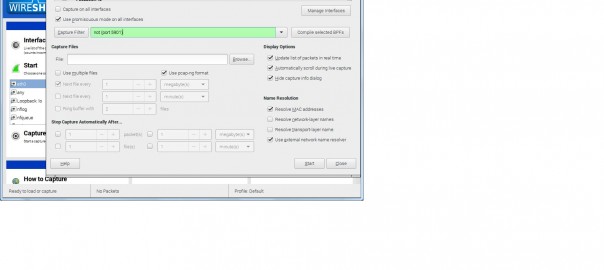You cannot get a static or fixed IP address working on you Raspberry PI with the current tutorials? Then you came to the right place!
The raspberry PI is an excellent device and I use it often as a server to host my projects. For most of my project I need a static IP address on my RPi. I thought that this would be an easy job just to change the /etc/network/interfaces (also according to a lot of tutorials). Turns out that from the jessie image (kernel 4.x) you need to change the dhcpd.conf. Below I will explain in detail the steps and some more guidance on where to configure your static IP address.
Network
Before you add a static IP address on your RPi, please consider where you want to make the configuration. It makes a lot of sense to configure your DHCP server (in most home networks your ISP router) with the appropiate settings rather then on the RPi. Based on the MAC address of your device the router is able to hand out a static IP address. Configuring this on your router makes administration easier due to the fact that you have 1 administration where all the data of the devices with a static IP address is stored.
Bonjour
Now that you have configured your router and your RPi has a static IP you can log on to the given IP address. But we people are better in remembering a name than numbers. So to make life more easier you can install avahi on your RPi.
Avahi is a linux implementation which enables programs/OS to publish and discover services and hosts running on a local network. For example, a user can plug their computer into a network and have Avahi automatically advertise the network services running on the machine which could enable access to files and printers.
The protocol behind avahi is known as Multicast Domain Name Service (mDNS) and can also be used as a system for local DNS resolution. Also apple addopted this protocol and implemented it in bonjour. Probally a lot of your devices in your network are already using this, eg. Chromecast, NAS server, open elec and arduino yun.
Next to boradcasting the services available on your host you can also reach your device by using the hostname and the .local suffix. E.g. ping monitoring.local
> ping monitoring.local
PING domotiga.local (192.168.2.30) 56(84) bytes of data.
64 bytes from 192.168.2.30: icmp_seq=1 ttl=64 time=3.87 ms
64 bytes from 192.168.2.30: icmp_seq=2 ttl=64 time=42.6 ms
64 bytes from 192.168.2.30: icmp_seq=3 ttl=64 time=66.6 ms
You can enable this on your RPi:
sudo apt-get update
sudo apt-get install avahi-daemon
Go ahead and ping the new .local address on the machine you wish to access the device from! If you installed Itunes on your windows machines you also have the bonjour service installed. If not, just donwload it from the apple website. You can now use this on your CLI but also from your webbrowser. If you want to browse through al available services/clients please install the avahi utils:
apt-get install avahi-utils
avahi-browse -a -t
The browse command will provide you with all available service:
+ wlan0 IPv4 DiskStation Apple File Sharing local
+ wlan0 IPv4 DiskStation _device-info._tcp local
+ wlan0 IPv4 Woonkamer _googlecast._tcp local
+ wlan0 IPv4 monitoring Remote Disk Management local
+ wlan0 IPv4 domotiga Remote Disk Management local
Static on Raspberry PI
Still you can have a good reason not to configure the static IP address via your router, in my case it was a network related project. Probally you already tried some configuration changes to the /etc/network/interface file. Please undo them. If you did not make a backup, you can use below config:
# Include files from /etc/network/interfaces.d:
source-directory /etc/network/interfaces.d</code>
auto lo
iface lo inet loopback
iface eth0 inet manual
allow-hotplug wlan0
iface wlan0 inet manual
wpa-conf /etc/wpa_supplicant/wpa_supplicant.conf
allow-hotplug wlan1
iface wlan1 inet manual
You can now edit /etc/dhcpcd.conf and please add:
interface eth0
static ip_address=x.x.x.x/24
static routers=x.x.x.x
static domain_name_servers=8.8.8.8
In my case I was connected via SSH, so you can now reboot RPi.

